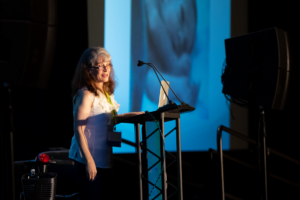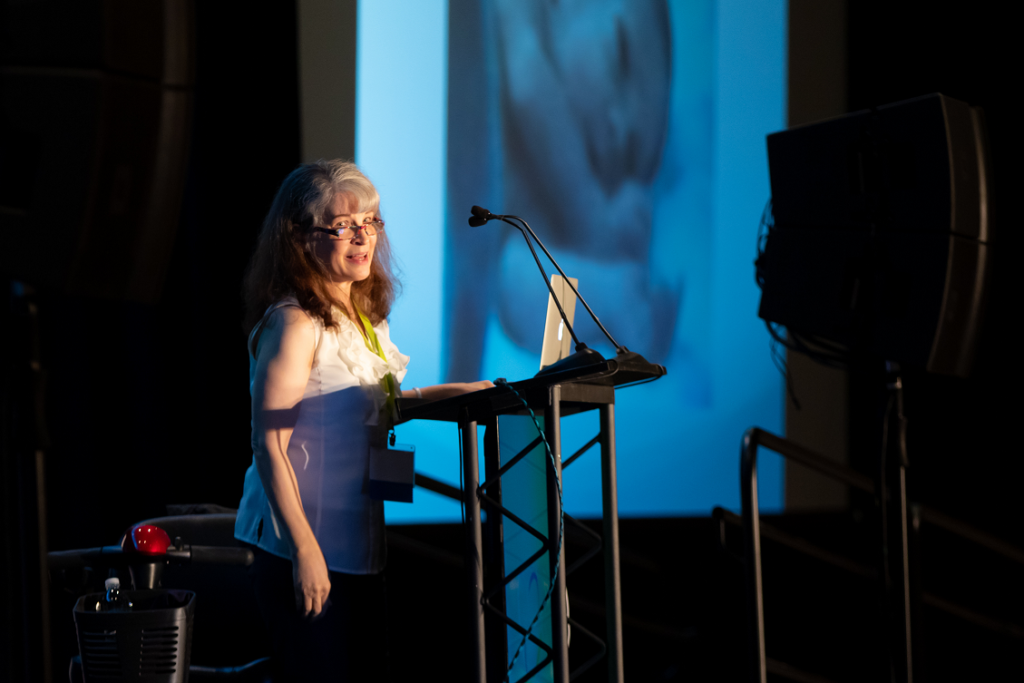Insightful presentation combining personal experience with professional knowledge to help expand insight regarding potential sequelae associated with neonatal brain injury. – Cathie Smith, PT, DPT, PhD, PCS, CNT

Our latest Special Topic Course in honor of National Cerebral Palsy Awareness Month. This incredible presentation by Dr. Jan Brunstrom-Hernandez received a well-deserved standing ovation at NANT 9. It will teach you and inspire you.
Course Information
Speaker: Jan Brunstrom-Hernandez, MD
Course Description: The term Cerebral Palsy (CP) refers to a heterogeneous group of permanent and currently incurable neurodevelopmental disorders of movement and posture that limit a child’s activity, and most children also have one or more comorbidities that further limit their function and quality of life. CP is the most common physical disability in childhood with a world-wide prevalence of about 1 per 500, and a United states prevalence of 1 in 323 children. CP is due to a non-progressive disturbance of fetal, neonatal or infant brain development, but in most cases the precise cause of the brain injury remains unknown.
CP is diagnosed clinically, based on history, physical and neurological examination, and new clinical tools that allow detection of motor abnormalities in neonates and young infants, combined with state-of-the-art brain MRIs, now make it possible to diagnose CP at much younger ages than ever before. Communicating a difficult diagnosis to parents/ caregivers (of CP or of at risk for CP) requires time, patience and compassion.
Early intervention starts in the NICU where therapists (PT, OT, SLP, music therapists) and nurses play a vital role in helping these little patients and their families garner strategy, strength and courage to move forward on a new path where they can find purpose and rediscover hope.
Target Audience: OT, SLP, PT, RN, MD and Neonatal Professionals
Level: Intermediate
Objectives:
1. List several common co-morbidities (neurodevelopmental, orthopedic and other health impairments) that occur in children with cerebral palsy.
2. Discuss strategies to communicate difficult diagnoses to parents and to help parents set goals and priorities that will help them move forward and improve their child’s health, function, participation and quality of life.
3. Describe presenter’s personal journey with cerebral palsy.
Instructional Method: Recorded webinar, video and handouts. Learning assessment and course evaluation follow course.
CE Credit: 1 hour of CE Credit – OT, PT, SLP
Fee: We are making this STC available at no cost for anyone in the world to watch through August 1, 2020. Members will maintain free access after August 1, included with Membership.
Access the course here.
Colleague Reviews:
She provided a fantastic perspective on why our work can have such an impact and I loved her quote of “always leave room for hope. –Andrea Ekstam, MA, CCC-SLP
A moving and wonderful presentation that will stay with me every day in my work in the NICU. – Amanda Maunder Neonatal Occupational Therapist Royal North Shore Hospital Sydney Australia
Dr. Jan was absolutely amazing. Her story is beyond inspirational and I think I will remember her for the rest of my career as an occupational therapist. – Jana Kitch, OTR/L
Excellent, informative and heart-warming presentation!– Kelli Dupps, OTR
Again, you may access this course here.

